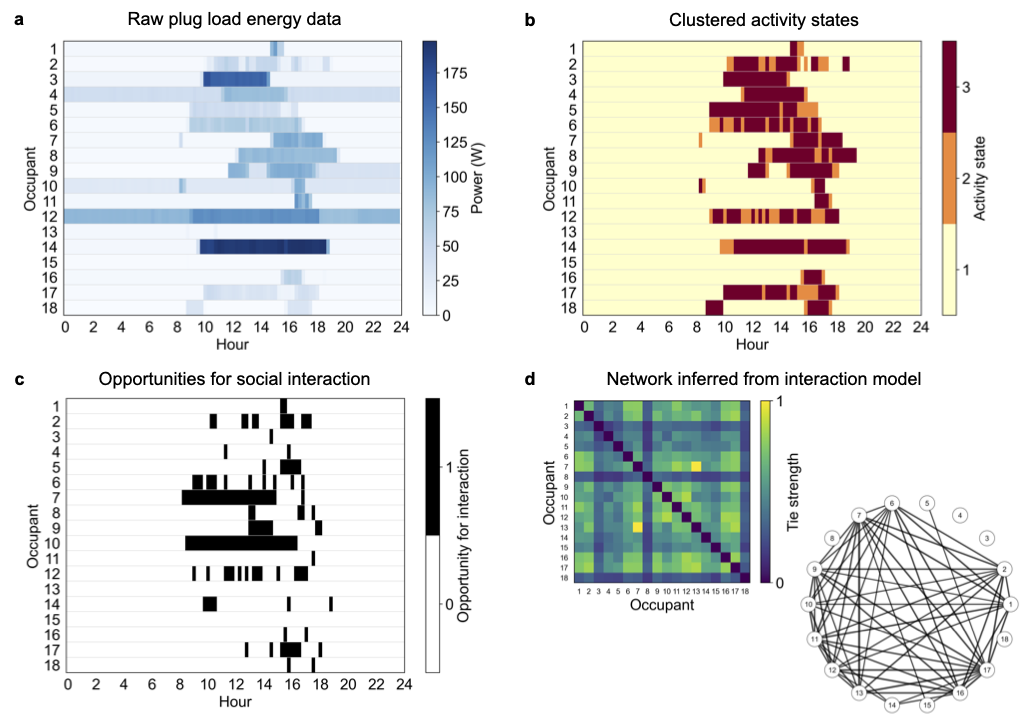Inferring building occupant ties
This work is about developing a model that successfully learns social and organizational human network structure using ambient sensing data from distributed plug load energy sensors in commercial buildings. A key goal for the design and operation of commercial buildings is to support the success of organizations within them. In modern workspaces, a particularly important goal is collaboration, which relies on physical interactions among individuals. Learning the true socio-organizational relational ties among workers can therefore help managers of buildings and organizations make decisions that improve collaboration. In this work, I introduce the Interaction Model, a method for inferring human network structure that leverages data from distributed plug load energy sensors. In a case study, I benchmarked the method against network data obtained through a survey and compare its performance to other data-driven tools. I found that unlike previous methods, our method infers a network that is correlated with the survey network to a statistically significant degree (graph correlation of 0.46, significant at the 0.01 confidence level). I additionally found that our method requires only 10 weeks of sensing data, enabling dynamic network measurement. Learning human network structure through data-driven means can enable the design and operation of spaces that encourage, rather than inhibit, the success of organizations.

The figure demonstrates the Interaction Model on example data from one day. Plug load energy data are abstracted into activity states, which enables identification of opportunities for interaction. These opportunities form the building block of the occupant network.
Publications
- Andrew Sonta and Rishee K. Jain. Learning socio-organizational network structure in buildings with ambient sensing data. Data-Centric Engineering, 1:e9, 2020. [Github] [PDF]
- Andrew Sonta and Rishee K. Jain. Building Relationships: Using Embedded Plug Load Sensors for Occupant Network Inference. IEEE Embedded Systems Letters, 2019. [PDF]
- Andrew Sonta and Rishee K. Jain. Inferring Occupant Ties: Automated Inference of Occupant Network Structure in Commercial Buildings. In The 5th ACM International Conference on Systems for Built Environments (BuildSys ’18), November 7–8, 2018. Shenzen, China. [PDF]